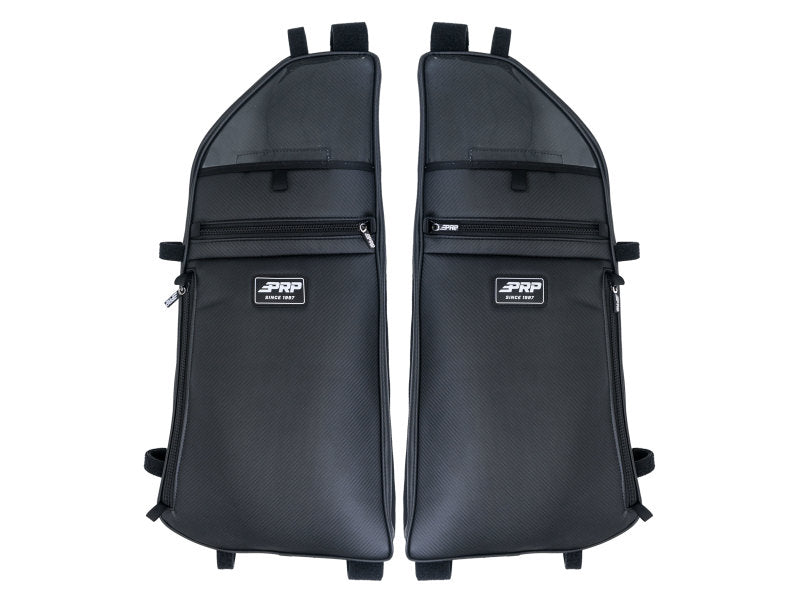Power steering pumps can make different noises when something’s wrong. If you hear whining, you might need to add more steering fluid. A squealing noise often means the belt is loose or worn out. When you hear groaning, air bubbles might be stuck in the system. To find what’s wrong, check if there’s enough fluid, look for leaky hoses, and make sure the pump works right by testing its pressure. To keep your steering working well, change the fluid every 2-3 years and check the hoses each month. Catching these problems early can save you a lot of money on fixes. Knowing what these noises mean helps you spot trouble before it gets worse and keeps your steering working smoothly.
Key Takeaways
-
Whining noises typically indicate low power steering fluid levels or worn internal pump components requiring immediate attention.
-
Squealing sounds suggest belt issues such as looseness or wear, while groaning indicates trapped air in the system.
-
Regular fluid checks, filter installations, and inspection of hoses for wear help prevent noise issues and maintain performance.
-
Slow steering response and unusual resistance when turning the wheel signify potential power steering pump failure.
-
Complete system diagnosis involves checking fluid levels, testing pump pressure, and inspecting pulley alignment during engine operation.
Understanding Power Steering Pump Basics
A power steering pump is the heart of your car’s power steering system - it takes power from the engine and turns it into fluid pressure that helps you steer.
The pump spins using your car’s belt and has small moving parts inside that rotate in an egg-shaped space to create the pushing force you need.
The pump works well because of its carefully fitted parts: a middle shaft, curved piece, and moving blades that create areas of high and low pressure. These pressure changes push fluid through the system smoothly.
A safety valve inside keeps pressure from getting too high when the engine runs fast. The torsion bar system measures how much force you apply when turning the wheel.
The pump teams up with your car’s steering parts to change the turning of your steering wheel into side-to-side movement using pressurized fluid. A reliable power source is essential for maintaining consistent pump operation and optimal steering performance.
Common Noise Symptoms
Power steering makes different sounds when there’s a problem, and it’s important to know what these sounds mean. These warning signs help catch issues early before they turn into bigger problems. Regular fluid level checks should be performed monthly to maintain optimal performance. Installing high-flow filters helps prevent contaminants from reducing steering system efficiency. The most common sounds are:
A whining noise often means the power steering fluid is too low or the pump is wearing out. Squealing happens when the belt that turns the pump gets loose or starts breaking down. Groaning sounds usually mean there’s air trapped in the system.
|
Noise Type |
Primary Cause |
Resolution |
|
Whining |
Low fluid/worn pump |
Fluid inspection/top-off |
|
Squealing |
Belt issues |
Belt adjustment/replacement |
|
Groaning |
Air in system |
System flush |
To keep these noises from starting, check the fluid level often, look at the belts, and fix problems as soon as they start. When checking for problems, look at the fluid first since most power steering troubles come from bad or dirty fluid. Finding and fixing problems early keeps repair costs down and helps your steering work well.
Diagnosing Power Steering Problems
When fixing power steering problems, look at three main parts: the fluid, pump, and pulley. Start by checking if there’s enough steering fluid and look for any leaks around the hoses, connections, and pump.
To check if the pump works well, test its pressure and listen to how it sounds. Watch out for squealing or grinding noises, which usually mean the pump is wearing out or broken. Just like using quality motor oil helps protect your engine, maintaining proper power steering fluid levels prevents pump damage.
Look at the pulley by putting a mark on it and watching how it turns when the engine is running - it should turn smoothly and line up right. Burnt smells during operation could indicate the pulley is binding and needs immediate attention.
To find the problem, look at the belt that turns the pump, make sure there’s enough fluid, and test how the steering feels.
If the problem stays after these basic checks, you might need a mechanic to run special tests to find tricky problems in the system.
Air Bubble Detection Methods
To find an air leak, mechanics first push pressure into the system to look for dripping fluid or bubbles around joints.
If pushing pressure doesn’t show the problem, pulling air out can reveal leaks by making bubbling noises or losing suction.
Turning the steering wheel back and forth while checking the fluid helps prove if there’s still air getting in - ongoing bubbles mean there’s still a leak.
It’s very important to check the pump’s intake side, looking at all tubes, clips, and connections for any damage that lets air sneak in.
Just like all-weather mats protect your car’s interior, proper power steering maintenance prevents damage to internal components.
Checking for air bubbles in power steering systems needs careful testing using both pushing and pulling methods, while engine operation during testing can help replicate pressure conditions.
To find an air leak, mechanics first push pressure into the system to look for dripping fluid or bubbles around joints.
Fluid Level Testing Steps
Check your power steering fluid by following these basic steps. Look for the fluid tank under the hood on the driver’s side - make sure the area is clean first. Look at the fluid level between the “MIN” and “MAX” marks, using the dipstick if your car has a metal tank. Next, check if the fluid looks dirty. Good fluid looks clear or slightly red - if it’s dark or black, it’s likely dirty. Put some fluid on a white cloth to get a better look at its true color. If you need to add more fluid, use the right type that matches your car’s needs. Pour it in slowly through a funnel while watching the level. When done, make sure the cap is on tight.
Power Steering Pump Maintenance
Taking care of your power steering pump helps your car’s steering system last longer. Clean fluid is essential - check it often and change it every 2-3 years to keep everything running smoothly.
Look at both the big and small hoses regularly, watching for signs of wear and fixing problems quickly.
To keep your system healthy:
-
Remove old fluid with a turkey baster and put in fresh fluid that matches your car’s needs
-
Check that hoses are tight and their outer layer isn’t damaged
-
Listen for weird noises from the pump and put in new filters once a year
Don’t forget to check the belt that drives the pump, the steering parts, and all connecting pieces regularly.
Fix any problems you find right away - this keeps your steering working well and stops bigger issues from happening later.
System Bleeding Procedures
A proper power steering bleed starts with putting the right fluid in the system up to the cold mark and lifting the car up. You can bleed the system by hand or use special tools like a vacuum pump to make the job easier.
First, with the engine turned off, fill up the fluid tank and turn the steering wheel all the way left and right while keeping an eye on the fluid level. Make sure you use only the steering fluid that matches what your car needs.
Next, start the engine and keep turning the wheel from side to side until you stop seeing air bubbles in the fluid. You’ll know you’re done when the pump runs quietly and smoothly, the fluid stays at the right level, and the steering works without making noise.
Hose Connection Inspection Guide
Watch for power steering hose problems with these steps to catch trouble early.
Look carefully for leaks and worn spots where hoses connect. Start the engine and turn the wheel to see if everything works right.
Check these spots:
-
Look for wet areas or fluid buildup around connections and beneath the car
-
Look at hose connections for rust, worn spots, and tight fit
-
Turn the steering wheel all the way left and right to test the system
Keep up with basic care, making sure rubber seals are good and connections are tight.
Think about putting in new hoses after five years, even if they look fine - this helps avoid breakdowns.
Pump Replacement Decision Factors
When facing power steering hose problems, car owners need to think about several things before getting a new power steering pump.
The main factor is cost - pumps usually cost between $842 and $941, depending on the car brand and type. Fancy cars need pricier parts, and repair costs change based on where you live and which shop you pick.
Pumps come in different types - rotary vane, roller, and slipper - and each affects both price and how well they work. Brand new manufacturer pumps work best but cost more, while aftermarket and used pumps are cheaper options.
Car owners who know their way around engines can save money by installing the pump themselves, but those without repair skills should let professionals handle it.
Signs you need a new pump include squealing, groaning, slow steering response, and especially if you spot fluid leaks or dirty fluid.
Preventive Care Best Practices
Looking after your power steering system helps avoid big repair bills and keeps parts working longer. The best way to do this is to check things regularly and keep the fluid clean and at the right level. Make sure to look for leaks each month, keep an eye on fluid levels, and get the system flushed out every 2-3 years.
To keep your system running well:
-
Check fluid levels when you change your oil and look for dirty or dark fluid.
-
Look at the hoses to make sure they’re not worn out, damaged, or missing their covers.
-
Put in new filters once a year and check steering parts often.
The way you drive matters too. Don’t turn the wheel all the way to one side and hold it there, and try to steer smoothly without jerking the wheel.
If you notice any problems, fix them right away before they cause other parts to break down.
Frequently Asked Questions
Can Power Steering Pump Noise Indicate Transmission Problems?
A noisy power steering pump usually isn’t linked to transmission troubles. While both parts can make similar sounds, they work on their own. The pump often gets loud when it’s low on fluid or its parts are getting old and worn out.
How Long Can I Drive With a Noisy Power Steering Pump?
A noisy power steering pump needs quick repairs. If you keep driving, you could lose steering control, damage other parts, and put yourself in danger. Get it fixed within two weeks at most to stay safe on the road.
Does Cold Weather Affect Power Steering Pump Performance?
Cold temperatures make power steering work harder because the fluid gets thicker and moves more slowly. When this happens, the steering wheel feels stiff and heavy, and the pump has to work extra hard to push the fluid around. You might also hear more noise from under the hood when turning the wheel in cold weather.
Will Aftermarket Power Steering Fluid Additives Fix Pump Noise Issues?
Power steering additives might quiet pump noise for a while, but don’t count on them to work well. They won’t fix worn-out parts or real mechanical problems that make your power steering pump noisy.
Can Using the Wrong Power Steering Fluid Cause Permanent Pump Damage?
Using the wrong power steering fluid can destroy your pump by breaking down seals, wearing out parts, and causing harmful chemical reactions. The wrong fluid thickness and ingredients steadily eat away at the pump’s inner workings.
Conclusion
Power steering pump maintenance requires systematic diagnostics and preventive care to verify ideal performance. Regular fluid checks, proper bleeding procedures, and prompt attention to unusual noises can prevent catastrophic system failures. Understanding the interconnection between pump components, fluid dynamics, and mechanical wear patterns enables accurate troubleshooting and appropriate repair decisions. For expert guidance, visit Gexhaust. Implementing scheduled maintenance protocols considerably extends pump lifespan and maintains steering system reliability. For professional assistance, Contact us.





